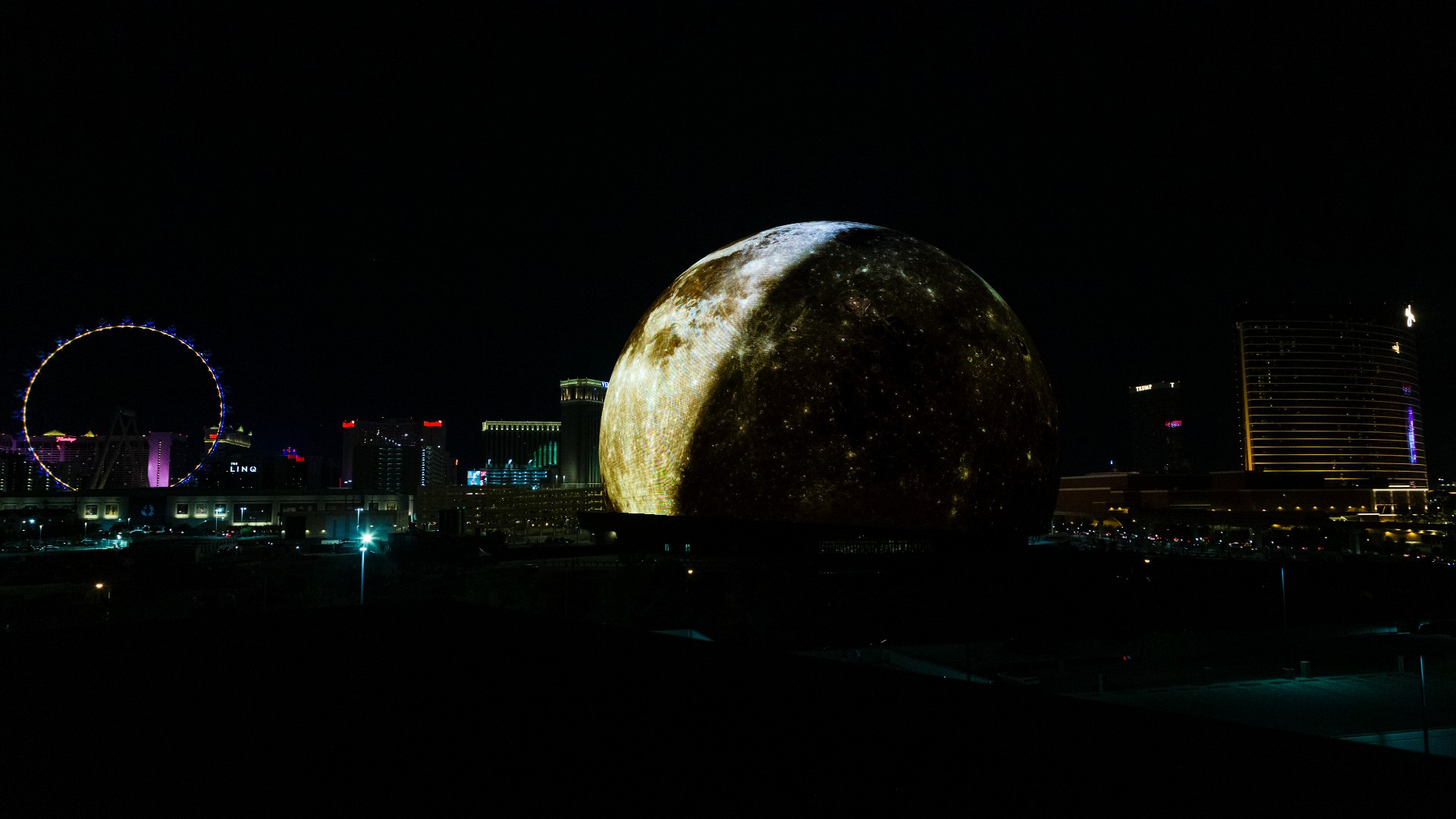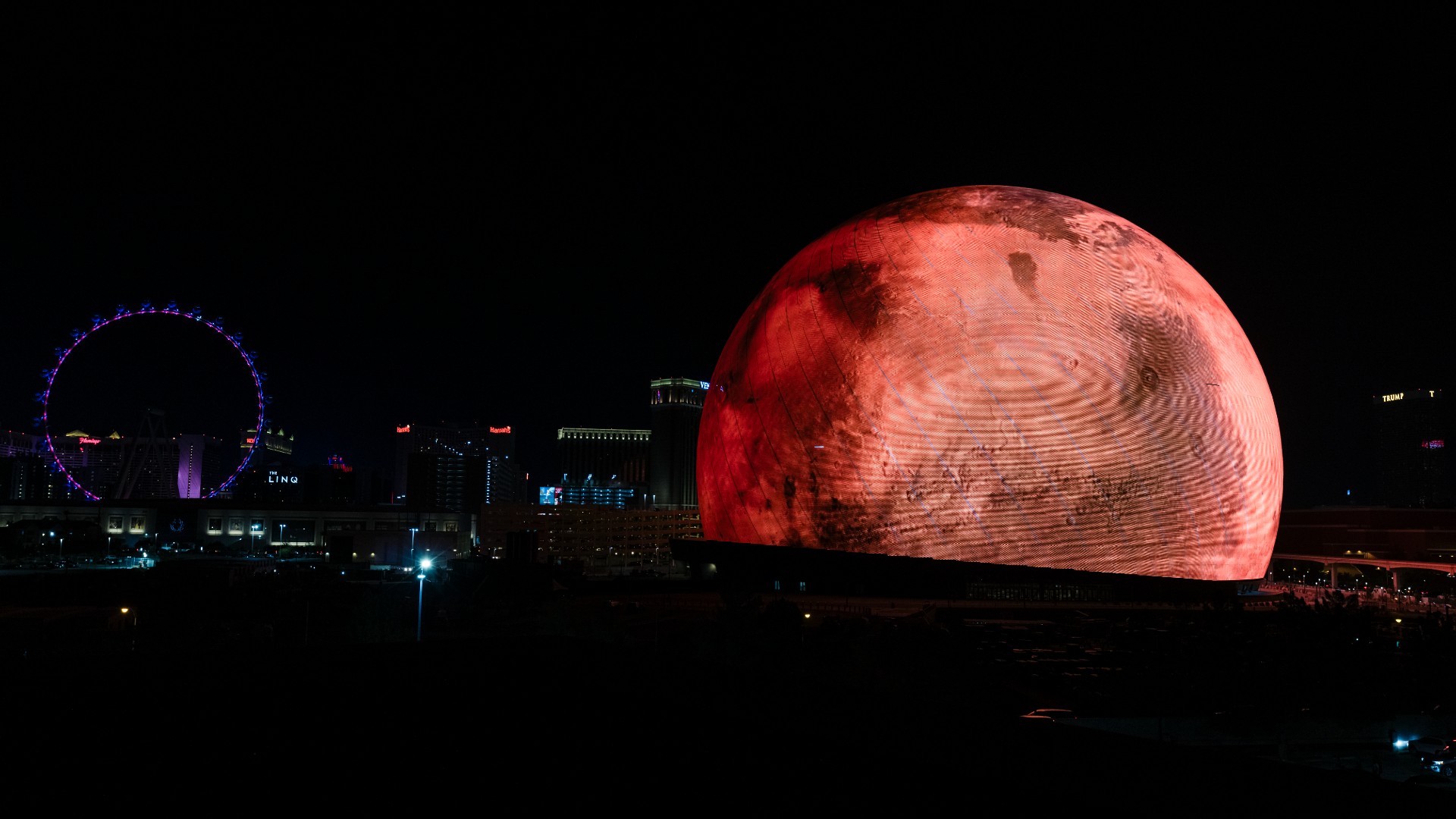See the wild Las Vegas Sphere transform into Earth, Mars and the moon (photos)
The world's largest LED display transformed into solar system bodies on July 4.

It looked as if the moon crashed into downtown Las Vegas.
The Sphere, a 366-foot-tall by 516-foot-wide (111m by entertainment venue set to open in September 2023, turned on its 580,000 square-foot LED exterior display for the first time last week as part of Las Vegas's July 4 celebration, and it's definitely captured the world's attention. The exterior, or 'exosphere' as it's officially called, dazzled both the gathered Las Vegas crowds as well as the internet after images and video from the celebration went viral over the weekend.
In addition to LED fireworks, American flag effects, nature scenes, and some sci-fi visuals, perhaps the most stunning use of the world's largest artificial spherical structure was projecting some other famous spheroids from around the solar system on its display, including the moon, Mars, and even Earth itself.
Related: The moon: Everything you need to know about Earth's companion
"The extraordinary experiences we can create are only limited by imagination, and we're thrilled to finally share with the world the spectacular potential of the Exosphere," David Hopkinson, President and COO of MSG Sports and the head of brand partnerships and global marketing for MSG parent company Sphere Entertainment Co., said in a company statement after the event.
To produce the spectacle, the Exosphere uses roughly 1.2 million LED "pucks," set eight inches apart, across the entire exterior of The Sphere. One puck contains 48 independent LED lights, and is capable of producing 256 million different colors — all of which adds up to an unprecedented canvas for artists and brands looking for the world's biggest billboard.
"The Exosphere is more than a screen or a billboard — it is living architecture, and unlike anything that exists anywhere in the world," said Guy Barnett, senior vice president of Brand Strategy and Creative Development for Sphere Entertainment Co. "[July 4th's] show provided a glimpse of the Exosphere's captivating power, and the possibilities for artists, partners, and brands to create compelling and impactful stories to connect with audiences in new ways."
Breaking space news, the latest updates on rocket launches, skywatching events and more!
As these images from the event highlight, it really is something you have to see to believe. The interior is no slouch either, with a domed ceiling and walls surrounding a 17,385-seat 'bowl' that will have its own 160,000 square-foot LED display wrapping around the audience.
The interior display will also boast an incredibly sharp resolution, promising high-definition visuals from wherever you are in the auditorium. Meanwhile, the roughly 164,000 speakers (yes, 164,000) will beam audio around the venue using advanced spatial audio techniques, including low-frequency audio that can't be heard but can be felt, heightening the immersive potential of the space.
For now, the only confirmed events at The Sphere are the band U2, who are set to christen the venue with four performances in September and October, and director Darren Aronofsky's film "Postcard from Earth," The Sphere's first "immerse experience," which will run for five days in the first half of October.
Tickets for both shows are on sale now at The Sphere's website, and no doubt more events will be added as we get closer to the venue's formal opening.
John is a science and technology journalist and Space.com contributor. He received his B.A. in English and his M.A. in Computer Science from the City University of New York, Brooklyn College, and has bylines with TechRadar, Live Science, GamesRadar, and other publications. You can find him on Bluesky at @johnloeffler.bsky.social or seeking out dark sky country for spectacular views of the cosmos.



